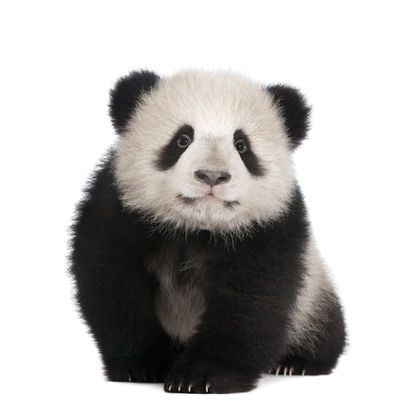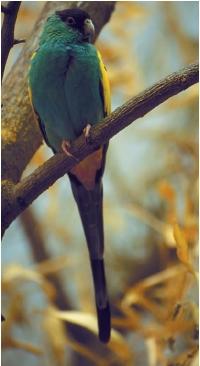Endangered species

An endangered species is any animal or plant species whose very survival is threatened to the point of extinction. Once extinct, a species is no longer found anywhere on Earth. Once gone, it is gone forever.
Throughout Earth's geological history species have become extinct naturally. However, in modern times species and their natural habitats are mostly threatened by human activities. Humans have already caused the extinction of many species, and large numbers of many other species are currently endangered and may soon become extinct.
Causes of extinction and endangerment
Most of the species that have ever lived on Earth are now extinct. Extinction and endangerment can occur naturally. It can be the result of a catastrophic disturbance, such as the collision of an asteroid with Earth some 65 million years ago. The impact brought about the extinction of almost 50 percent of plant species and 75 percent of animals species then living on Earth, including the dinosaurs. Disease, a change in climate, and competition between species also can result in natural extinction.
However, since humans became Earth's dominant species, there has been a dramatic increase in the number of endangered or extinct species. The overhunting of wild animals (for their hides or meat or to protect livestock) and the destruction of natural habitats are the human activities most responsible. A wave of extinctions began in North America about 11,000 years ago, at about the time when people first migrated across a land bridge from Siberia to present-day Alaska. Probably within only a few centuries, species such as the mastodon, mammoth, and saber-toothed tiger had become extinct on the continent.
In modern times, overhunting has caused the extinction of such species as the dodo (1681), great auk (1844), and passenger pigeon (1914). In 2000, for the first time in about 300 years, a member of the primate order (the group of mammals that includes monkeys, apes, and humans) became extinct. The vanished primate was Miss Waldron's red colobus, a red-cheeked monkey. Scientists said its extinction was brought about by overhunting and the destruction of its habitat in the rain forest canopy in the African countries of Ghana and Ivory Coast.
How many endangered species are there?
Scientists readily agree that the rate at which species are becoming extinct around the world is increasing rapidly. At present, they believe extinctions caused by humans are taking place at 100 to 1,000 times nature's normal rate between great extinction episodes. It is hard, however, to put a figure on the actual number of endangered species. Researchers are able to document the endangerment of large and well-known animal and plant species. But it is impossible to measure the total number of species going extinct because scientists have described and named only a small percentage of the world's species. Only about 1.4 million species—out of an estimated 10 million to 100 million—have been described to date.
Words to Know
Biodiversity: The wide range of organisms—plants and animals—that exist within any given geographical region.
Endangered: When a species is vulnerable to extinction.
Extinct: When no members of a species are found anywhere on Earth.
Threatened: When a species is capable of becoming endangered in the near future.
There is an enormously large number of endangered species living in tropical rain forests, and most of these have not yet been "discovered" by scientists. Because rain forests are quickly being converted to farmland and human settlements, many of these species are becoming extinct before humans know anything about them.
Conservation organizations around the world have taken on the task of trying to catalog as many of the world's endangered species as possible. At the beginning of 2001, it was estimated that there were more than 1,200 endangered or threatened (those capable of becoming endangered) species in the United States and more than 1,800 worldwide. Because most of Earth's biodiversity (the number of species in a given habitat) is not yet discovered and cataloged, it is likely that there are perhaps several million endangered species on Earth.
Why are endangered species important?
It is critical that humans act to preserve endangered species and their natural habitats. These species are important and worthwhile for many reasons. First, and most important, all species have value simply because they are living organisms on Earth. Second, many species have a known value to humans. Food is provided by domestic plants and animals raised on farms, as well as certain animals, birds, and fish hunted in the wild. Humans also benefit from the role many species play in the environment. This includes cleansing the air and water, controlling erosion, providing atmospheric oxygen, and maintaining the food chain. Third, many species have a presently unknown value to humans, such as undiscovered medicinal plants.
Various actions have been taken to protect endangered species. In 1973, the U.S. Congress passed the Endangered Species Act. It established a list of endangered species and prohibited their trade (the list is updated periodically). The Convention on International Trade in Endangered Species (CITES, pronounced SIGH-tees) is a multinational agreement that took effect in 1975. Its aim is to prevent the international trade of endangered or threatened animal and plant species and the products made from them (by the end of 2000, 152 nations had signed the agreement). In 1992, the United Nations Conference

on Environment and Development (also known as the Earth Summit) was held in Rio de Janeiro, Brazil. One of the declarations adopted by the representatives at the conference called for an end to the loss of the world's species. The declaration was signed by more than 150 of the 172 nations that attended the conference.
Scientists took an even greater step toward preserving endangered species when, in early 2001, they announced the cloning of a gaur (pronounced GOW-er). The gaur is an ox native to Southeast Asia and India. While some 30,000 still exist in the wild, their numbers are declining because of hunting and habitat loss. To clone the gaur, the scientists removed the nucleus from a cow's egg cell and replaced it with the nucleus of a gaur skin cell. They then placed the fertilized egg cell in the womb of a domestic cow, which brought the gaur to term. Sadly, the baby gaur survived only two days after birth, dying of dysentery (a disease caused by an infection that is marked by severe diarrhea). While some scientists remain optimistic about the future of cloning endangered species, others believe that such cloning could hamper efforts to conserve biodiverse habitats by offering to rescue endangered species in a lab.
[ See also Biodiversity ; Environmental ethics ; Rain forest ]
omg i love it so much.....
i
P.S.this story is touching
i love it
it's so amazing for me
and i will share it for my friends
thanks alot
i reed this all in book also
it godd